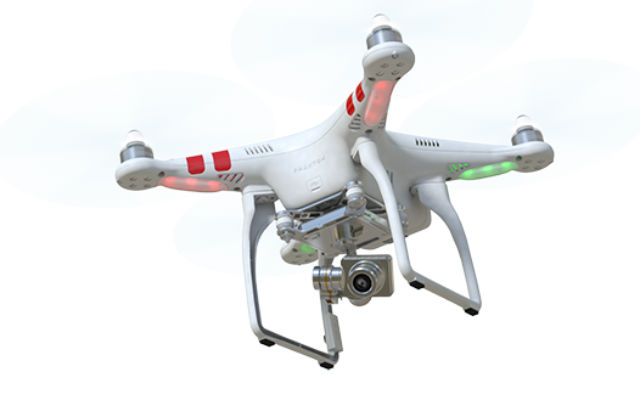An unmanned air vehicle operator has been authorised to carry out aerial photography of real estate in the USA, following the first exemption award for this application by the Federal Aviation Administration.
The FAA awarded an exemption to Douglas Trudeau of Tierra Antigua Realty in Tucson, Arizona, permitting him to fly the DJI Phantom 2 Vision+ quadrotor UAV to supplement property video listings and “to enhance academic community awareness”, the FAA says.
“The enhanced safety and reduced environmental impact achieved [by] using a UA [unmanned aircraft] with the specifications described by the petitioner and carrying no passengers or crew, rather than a manned aircraft of significantly greater proportions, carrying crew in addition to flammable fuel, gives the FAA good cause to find that the UAS operation enabled by this exemption is in the public interest,” the administration says in its exemption documents.
An exclusion was also awarded to Advanced Aviation Solutions in Spokane, Washington – a provider of precision crop measuring and surveillance.
Advanced Aviation plans to use a Sensefly eBee Ag fixed-wing UAV to make photographic measurements and complete crop searches for precision agriculture.
Petitions for both exemptions were submitted inJuly last year, and authorised on 5 January.

DJI
The exemptions are the 13th and 14th granted to 13 different companies for UAV use in a variety of different industries, including cinematography, aerial surveys and pipeline inspections. The FAA says it has received 214 exemption requests for commercial UAV use to date.
Both of the two-year exemptions were authorised because the FAA considered the operations of no threat to other users of the national airspace (NAS), and in turn certificates of airworthiness were not required. Findings that led to exemptions such as these are permitted under section 333 of the FAA Modernization and Reform Act of 2012.
Both applicants must obtain a Certificate of Waiver or Authorization (COA) that ensures the airspace for their proposed operation is safe, as well as guaranteeing that the operators have taken the required steps to see and avoid other aircraft, the FAA notes. In addition, the COAs will mandate flight rules and timely reporting of any accident or incidents.
Notably, the Air Line Pilots Association International (ALPA) submitted an objection to both petitions, the FAA says, in which ALPA claimed that because the UAVs will be used for “compensation or hire”, a current FAA Commercial Pilot Certificate – with an appropriate category and class rating for the type of aircraft flown – should be required.
However, the FAA referred to a previous exemption granted to Astraeus Aerial, which claimed that a pilot in command with a private pilot certificate operating a UAV would not impact NAS operations or pose a threat to those on the ground. As a result, ALPA’s objections were rejected.
“The petitioner plans to operate in the NAS over private property while also limiting access to the property at times he is operating the UA,” the FAA adds.
Furthermore, ALPA claims that command and control failures of UAVs would be dangerous, and therefore redundancy measures have to be in place to ensure that safe modes are available should contact be lost with the UAV.
The FAA agrees with this concern, but considers there to be “sufficient design features” mitigating the risk on both proposed aircraft that override this objection.
The Phantom 2 will be operated below 300ft within a radius of 304m (1,000ft) from the controller, to aid in direct line of sight visual observation, the FAA says. The type will be limited to operations of 3-7min per flight.
The eBee, meanwhile, weighs some 0.6kg (1.3lb), and operation speed of the aircraft will not exceed 70kt (130km/h). It is not permitted to fly above 400ft.
Source: FlightGlobal.com


























